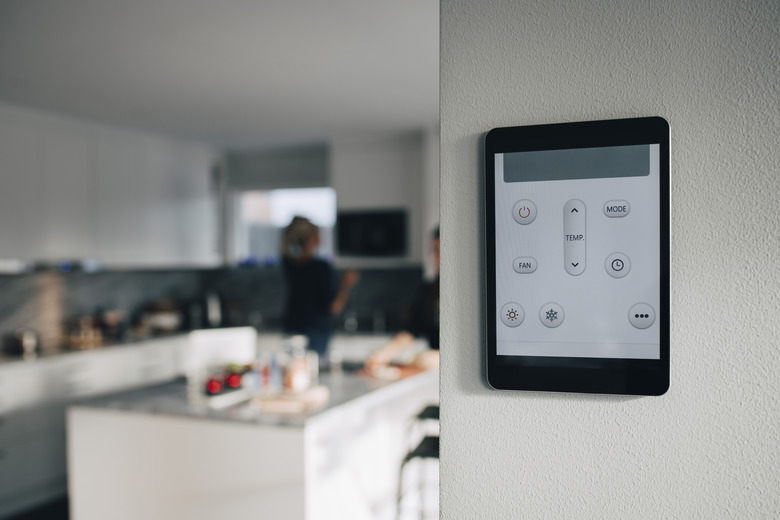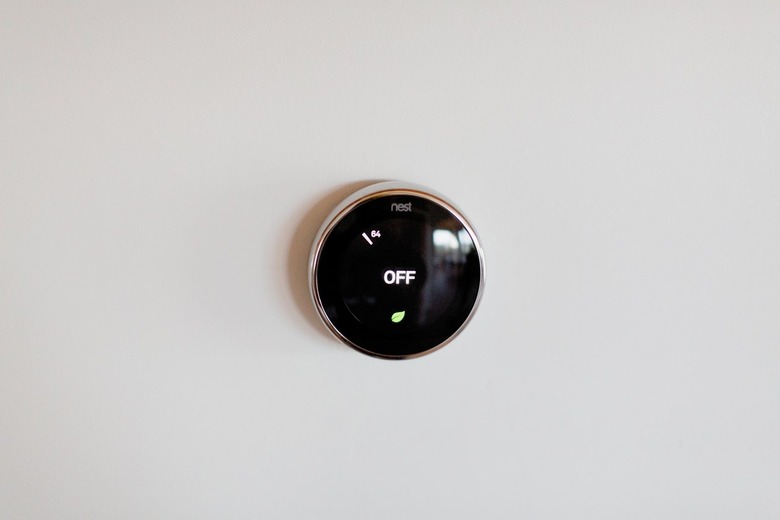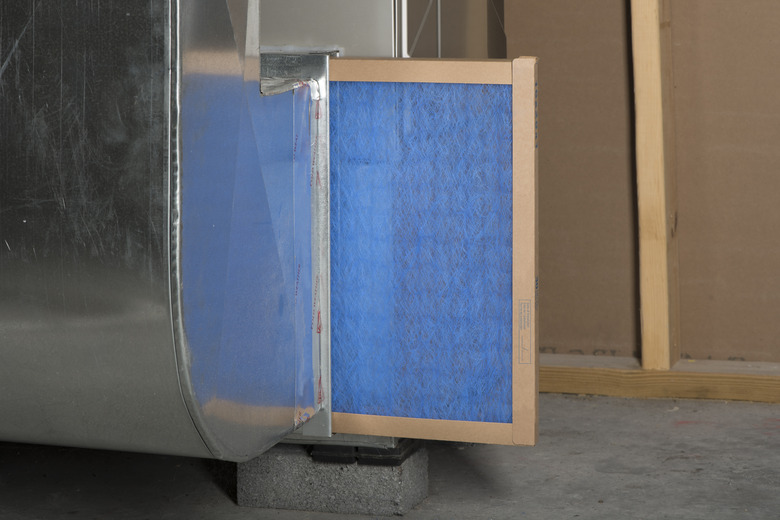9 Ways To Make Your Furnace More Efficient
We may receive a commission on purchases made from links.
Increasing the efficiency of your HVAC unit can lower your monthly energy bills, and you don't have to invest in a new furnace to reap these savings. In fact, simply changing a few settings on your programmable thermostat could do the trick. Other techniques are more hands-on but still DIY-friendly for homeowners, and just a few circumstances require a pro.
1. Seal HVAC Duct Joints
1. Seal HVAC Duct Joints
The most efficient HVAC units move air from point A (the furnace) to point B (every room in your home) without losing any quantity of air. However, unsealed air ducts can lose around 20 percent of the air — which you're paying to heat! — through loose joints in the ductwork. Sealing every seam and screwhead on your ductwork can greatly improve the efficiency of the HVAC system.
Materials like duct mastic and furnace tape form an airtight barrier on both flexible and solid ducts. However, you can only apply these products on the ducts that you can reach. If many of your ducts are hidden within the walls or ceiling, call a pro who specializes in aerosol duct sealing. This completely seals the ducts from the inside out.
2. Insulate HVAC Supply Ducts
2. Insulate HVAC Supply Ducts
Once you've sealed duct joints to ensure the quantity of air remains the same, it's time to wrap those ducts in insulation to keep the air at a steady temperature. Otherwise, the air loses heat as it travels through uninsulated ducts. By the time the air arrives in your home, it may feel cool. As a result, the heating system will work extra hard to make up for that heat loss.
You don't need to insulate the return ducts since the air temperature in these ducts doesn't matter. (Return ducts terminate at the bottom of the furnace, whereas supply ducts stem from the top of the furnace.) Insulating ducts can be a DIY job, but sometimes, it's worth calling a pro when the ducts are in a crawl space or other awkward location. If you do choose to handle this yourself, gear up with eye protection, a dusk mask, long pants and long sleeves to protect yourself from fiberglass particles.
3. Weatherize and Insulate the Entire House
3. Weatherize and Insulate the Entire House
Just as air leaks out of unsealed ducts, it also escapes from drafty, uninsulated rooms. A house with poor insulation and weatherization won't stay at the appropriate temperature for long, causing the furnace to kick on frequently (and increasing your heating bills). Sealing around exterior doors and windows with expanding foam, backer rod or weatherstripping can be a big help. However, because hot air rises, you'll get the most bang for your buck by insulating the ceilings and attic.
How you fill and decorate a room also impacts weatherization. Feature bookcases, artwork or hanging quilts on exterior walls for additional insulation. Keep interior doors closed and use draft dodgers to stop air from exiting through the gap under the door. Lay down fluffy rugs — even over the top of carpeting — to keep your feet warm in the winter, as having chilly feet will make your entire body feel cold. Install thick curtains over every window and keep them closed except in the case of south-facing windows on sunny days.
4. Install Airflow Dampers
4. Install Airflow Dampers
Why heat a section of the home you aren't using? While closing registers in unused rooms seems like a good idea, it's inefficient. Warm air still travels a long way through the duct before its path is blocked, and by then, it's too late to redirect its route. You end up sending the same amount of air through the system as before.
Instead, the air needs to be blocked much closer to the furnace. Motorized dampers can be installed at virtually every branch in the ductwork. You can then control the dampers through the thermostat. This allows you to heat only the rooms you want to heat without losing heated air within the ducts. Because this project requires electrical installation, call a pro.
5. Lower the Thermostat Temperature
5. Lower the Thermostat Temperature
Start by evaluating the typical temperature settings on your thermostat. When there's a significant difference in indoor and outdoor air temperature, the furnace has to power on more often and for a longer period of time to reach and maintain the desired indoor temperature. Lowering the temperature settings can improve efficiency. For example, if it's 30 degrees outside and your thermostat is normally set to 74, consider setting the furnace to 70 or 68. Even temperatures as low as 64 can be comfortable if you wear a sweater and slippers.
Adjusting your thermostat by 1 degree correlates to about 1 percent in savings over an eight-hour period. You can maximize your heating costs by using a programmable thermostat, which allows you to schedule temperature changes throughout the day. For example, you don't need the house to be toasty when you're at work, so set it to about 62 degrees during that eight-hour period. Consider lowering the temperature at night as well since you can bundle up under blankets to stay extra warm.
6. Use a Secondary Heat Source
6. Use a Secondary Heat Source
Sometimes, it just isn't comfortable to keep the thermostat turned low even if it means your furnace runs more efficiently, and you save money on utility bills. Consider investing in secondary heat sources instead. For example, set up a space heater in your home office during the day or in the bedroom at night. Other alternatives include heated rugs or wood-burning stoves.
7. Turn the HVAC Fan to "Auto"
7. Turn the HVAC Fan to "Auto"
Check to see if your fan is set to "on" or "auto" via your thermostat. If it's set to "on," it blows continuously. This does have some advantages if you have particular concerns about air quality since it decreases humidity and constantly pulls air through the furnace filter. However, in terms of energy efficiency, "auto" requires less electricity because the fan only runs when the furnace needs to blow warm air through the ducts.
8. Change the Filter Regularly
8. Change the Filter Regularly
Air cannot easily flow through a dirty filter. The furnace has to work extra hard and for a longer period of time to pull sufficient air through the filters. It may even overheat in these conditions. A dirty filter also increases the risk of dirt particles clogging the furnace motors, which shortens their life span. Change furnace filters every three months if you have pets or tend to bring a lot of dust and dirt inside from your clothes and shoes. Otherwise, change your filter once per year.
9. Adjust the Motor Speed
9. Adjust the Motor Speed
Some furnaces feature a variable-speed blower motor. The blower draws air from the return duct and pushes it across the heat exchanger. If it's set to the wrong speed, too much (or too little) pressure can build up inside the ducts. The air may also travel across the heat exchanger too quickly, resulting in the furnace running for longer periods of time. Because the ideal speed for this motor depends on several factors, including the size of the duct, it's best to call in a pro for a consultation.


